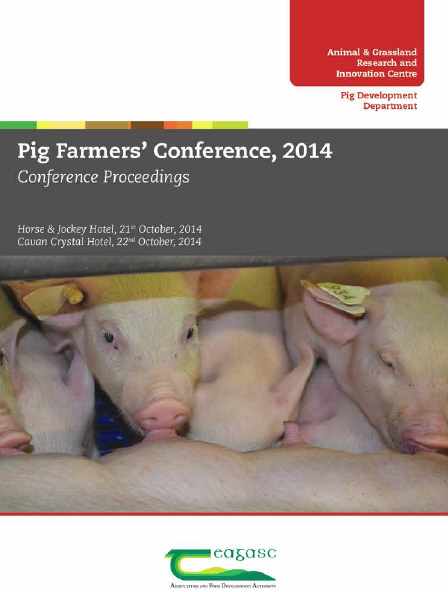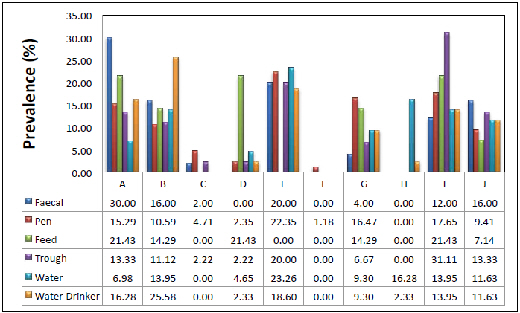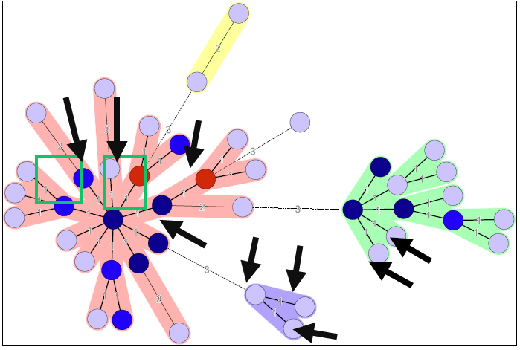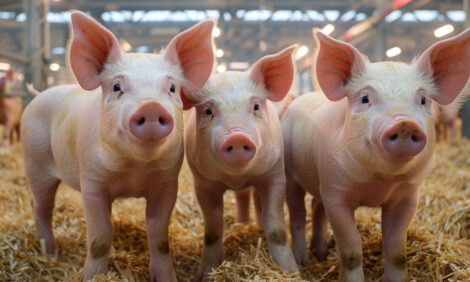



The Link Between Feed and Salmonella in Pigs
At the 2014 Teagasc Pig Farmers Conference, a paper by first-named author, Anne Marie Burns, showed Salmonella detected in either feed or pig faecal samples on nine out of 10 high-seroprevalence pig farms in Ireland. It also confirmed the occurrence of monophasic Salmonella Typhimurium on Irish pig farms and the indication of its role in the transmission of Salmonella from contaminated feed to pigs.
Background
The link between feed, farm and food is well recognized and studies have demonstrated that Salmonella strains isolated from the feed mill or the finished feed can later be isolated from the farm, abattoir and meat (Shirota et al., 2001; Österberg et al., 2006; Molla et al., 2010).
An EU baseline study found that the prevalence of intestinal Salmonella in slaughter pigs within the EU was 10.3 per cent, whereas the observed prevalence within Ireland was above this average at 16.1 per cent (EFSA, 2008). Furthermore, Ireland had the highest Salmonella contamination rate (20 per cent) on pre-chill carcasses in the same study.
In countries with a low on-farm prevalence of Salmonella (e.g. Denmark, Sweden, Norway and Finland), human infection linked to pork consumption has been traced back to Salmonella-contaminated feedstuffs (Hald et al., 2006; Wierup et al., 2010; Crump et al., 2002).
As other EU countries (e.g. Ireland) reduce their on-farm Salmonella seroprevalence, they must become more vigilant in terms of producing Salmonella-free pig feed. The aim should be to ensure that, in the first instance, purchased/home milled feed is “Salmonella-free” (i.e. feed that contains insufficient numbers of viable Salmonella to pose an infective risk to animals consuming it). Nonetheless, feed on the farm, even if Salmonella-free when first introduced onto the farm, is an important vector for on-farm Salmonella spread (Wong et al., 2002).
The principle source of Salmonella contamination in pig feed is specific feed ingredients that are combined into compound feed at feed mills (Coma, 2003). Protein-rich feed ingredients used in pig diets in Ireland are almost exclusively imported. A recent study showed that Salmonella was frequently isolated from imported consignments of soybean meal and rapeseed meal (Wierup and Haggblom, 2010).
Relatively small quantities of animal protein (e.g. fishmeal and milk powders) are also used for formulating post-weaning diets and these ingredients may also be a source of Salmonella. In addition, around 70 per cent of Irish pigs are liquid-fed using computerised feeding systems and liquid co-products/by-products, which might also be a risk, are sometimes fed as part of the liquid feed mix.
Even minor Salmonella contamination during feed production has the potential to affect many herds. Maciorowski et al. (2006) has shown that Salmonella can enter animal feeds at several points throughout the feed production process, including the primary production of feed ingredients, milling, mixing, and/or storage.
A revised National Pig Salmonella Control Programme was implemented in Ireland in January 2010, with monitoring based on determining the Salmonella status of pig herds by serological testing of meat juice at slaughter. At present 17 per cent of Irish pig herds presented for slaughter have high seroprevalence (up to 50 per cent prevalence) (DAFM, personal communication).
In a ‘Farm to Fork’ food safety concept, safe feed is the first step in ensuring safe food. Therefore, the aim of this research was firstly, to carry out an in-depth study on 10 high Salmonella-seroprevalence pig farms to identify which production stages are the principal harbours of Salmonella infection and to assess the occurrence of Salmonella in feed throughout the different production stages.
The second aim was to assess the occurrence of Salmonella and Enterobacteriaceae (indicator bacteria) in a range of feed ingredients and compound feed sampled from the five commercial feed mills and one home compounder supplying the 10 high-seroprevalent pig farms.
Overview of the Research
Farm survey
The 10 farms identified for sampling were selected from those with a history of high (>50 per cent) Salmonella seroprevalence in the Department of Agriculture, Food and the Marine Irish Pig Salmonella Control Programme. Each farm (coded A to J) was sampled on one occasion between March and August 2012 and again between December 2012 and June 2013.
On each farm, a number of composite faecal samples (from at least three pigs) were collected at random from each production stage. Where insufficient faecal samples were obtained, sterile gauze socks were used to swab the pen.
Pen environmental samples were also taken, i.e. 500-ml water samples were collected into sterile bottles directly from the nipple drinkers and swabs were taken from the troughs and water drinkers.
Feed samples (50 to 100g) which included liquid and dry feed (meal and pellets), depending on the farm and production stage, were taken from troughs, hoppers and storage areas (e.g. feed bins, feed tanks) on the farms.
All samples were immediately transported on ice to the laboratory, where they were stored at 4°C until analysis (within 24 hours).
Mill survey
A range of raw ingredients (n=338) and finished feeds (n=317) were obtained from feed mills supplying each of our 10 selected pig farms on a monthly basis for a six- to nine-month period between November 2012 and September 2013. One was a home compounder and the others were commercial mills.
Feed ingredients were sampled at the point of entry (ports), at mill intakes and from grain merchant storage bins and finished feeds were sampled from every finished feed batch. All samples were taken by mill personnel in accordance with Commission Regulation (EC) No 152/2009 and submitted to the laboratory on a monthly basis where they were tested for Salmonella and Enterobacteriaceae.
Results and Discussion
Farm survey
A total of 2,985 samples consisting of faecal/pen (n=926), feed (n=585) and environmental (n=1,474) samples were taken across all production stages and analysed for the presence of Salmonella.
Salmonella was detected in pigs on nine out of the 10 commercial farms. Almost 15 per cent of faecal/pen samples and eight per cent of environmental samples were positive for Salmonella (Figure 1).

This was to be expected, as all 10 farms were selected due to their history of high Salmonella seroprevalence. Eleven different serotypes were recovered, with a monophasic variant of Typhimurium (4,[5],12:i:-) predominating, accounting for 42 per cent of all isolates recovered. The other serotypes recovered were Derby (27 per cent), Typhimurium (13 per cent), London (6 per cent), Infantis (4 per cent), Typhimurium Copenhagen (2.7 per cent), Dublin (1.7 per cent), Tennessee (1.4 per cent), Anatum (0.69 per cent), Orion (0.35 per cent), and Stanley (0.35 per cent), each from one herd.
Fourteen different antibiotic-resistance patterns were observed among the Salmonella isolates obtained from the farms, with isolates resistant from between one to eight antibiotics.
There was no consistent pattern of infection found on the farms; however, large numbers of second-stage weaners (22.5 per cent) and gilts (18.8 per cent). Two farms (A and E) had notably higher Salmonella prevalence than the other farms (45 and 42 per cent, respectively).
Only 2.4 per cent of all feed samples taken across all production stages were Salmonella-positive. These Salmonella-positive feed samples were found on six farms and the Salmonella serotypes isolated were 4,12:i:-, Derby, Typhimurium, Typhimurium Copenhagen and Tennessee.
Molecular analysis is on-going to establish if the strains found in the feed were the same as those recovered from pigs on the same farms. Six (43 per cent) of the positive feed samples originated on farms using liquid feed (farms A, B and J). The Salmonella-positive feed samples were generally recovered at only one stage of production on each farm, although on farm D, they were found in two stages (dry sows and gilts). Feed sampled from dry sows had the highest Salmonella prevalence (35.7 per cent of all samples positive).
Mill survey
Salmonella was recovered from two ingredients (wheat and soybean) sampled from one feed mill and one home compounder and in three compound feeds (dry sow and finisher) sampled from two commercial feed mills, resulting in contamination rates of 0.59 per cent and 0.95 per cent for ingredients and finished feed, respectively.
The proportion of meal samples contaminated with Salmonella was around 1.6 per cent, whereas 0.54 per cent of pelleted feed samples were contaminated. All of the Salmonella isolated were monophasic variants of Salmonella Typhimurium (4,[5],12:i:-) and were antibiotic-resistant (resistant to between two and seven antimicrobials). Molecular fingerprinting methods were used to compare the 4,[5],12:i:- strains isolated from the mills with those found on the farms during the farm survey.
The data showed that there were two distinct profiles common to both feed mills and farms. A visual representation of these findings is given in Figure 2.

Each MLVA profile is indicated by one node or branch tip, displayed as circles that are connected by branches on a minimum-spanning tree. The length and the colour of the branches represent genetic distances (changes in loci) between two neighbouring types. The sizes of the different colour circles depend on their population size.
In Figure 2, each circle represents one type of Salmonella, with the most central circle representing the ancestral type from which the others have been derived. The length of the “branches” represents the evolutionary distance between profiles. The mill strains (highlighted in green boxes) show strong correlations with strains isolated from farms A, G and J. Strains highlighted by black arrows indicate a correlation between Salmonella strains recovered from feed samples taken on-farm and the Salmonella strains being shed by the pigs on those farms (farms A, B, D and G). This finding, combined with the results of other analysis techniques strongly suggest that the strains isolated on these farms are closely related to those found in the mills and may have originated from contaminated compound feed.
In addition, data from this study indicated that a large proportion of the ingredients used for animal feed manufacture are contaminated with considerable levels (more than 104 CFU per gramme) of Enterobacteriaceae, which are an indicators of faecal contamination.
Enterobacteriaceae were detected in 91.6 per cent of meal samples, whereas only 28.7 per cent of pelleted feed harboured Enterobacteriaceae, most likely as a result of the high temperatures involved in the pelleting process.
Conclusion
In order to reduce the prevalence of Salmonella in pigs, knowledge of the risk factors associated with subclinical infection is essential.
In this study, Salmonella was detected in either the feed or pig faecal samples on nine out of 10 high-seroprevalence pig farms.
The incidence of Salmonella in compound feed was low at less than one per cent. However, it is important to note that the strain of Salmonella found in compound pig feed at feed mills was also detected on pig farms, indicating a possible link between Salmonella-contaminated feed and the occurrence of Salmonella in pigs.
This study highlights the need to ensure that feed is free of Salmonella contamination as safe feed is the first step in ensuring safe pork.
Contamination of raw materials should be viewed as a critical control point for the entry of pathogenic bacteria into the feed and food chains. Even minor Salmonella contamination in feed has the potential to affect many herds, potentially leading to human infection via consumption of contaminated pork.
Another key finding from this study is confirmation of the occurrence of monophasic Salmonella Typhimurium on Irish pig farms and the indication of its role in the transmission of Salmonella from contaminated feed to pigs.
Reasons for the dramatic increase in the number of reported cases of antibiotic-resistant monophasic Salmonella Typhimurium in recent years remains unknown but this trend has also been seen other European countries. This serotype was previously isolated from humans, as well as a wide range of animals and foods of animal origin, with pigs and pig meat appearing to be a common reservoir of infection.
Reference
Burns A.M., G. Duffy, G.E. Gardiner and P.G. Lawlor. 2014. The link between feed and Salmonella. Proceedings of the Teagasc Pig Farmers' Conference 2014. 21 and 22 October 2014. p42-47.
Further Reading
You can view other papers from the 2014 Teagasc Pig Farmers Conference by clicking here.
January 2015








